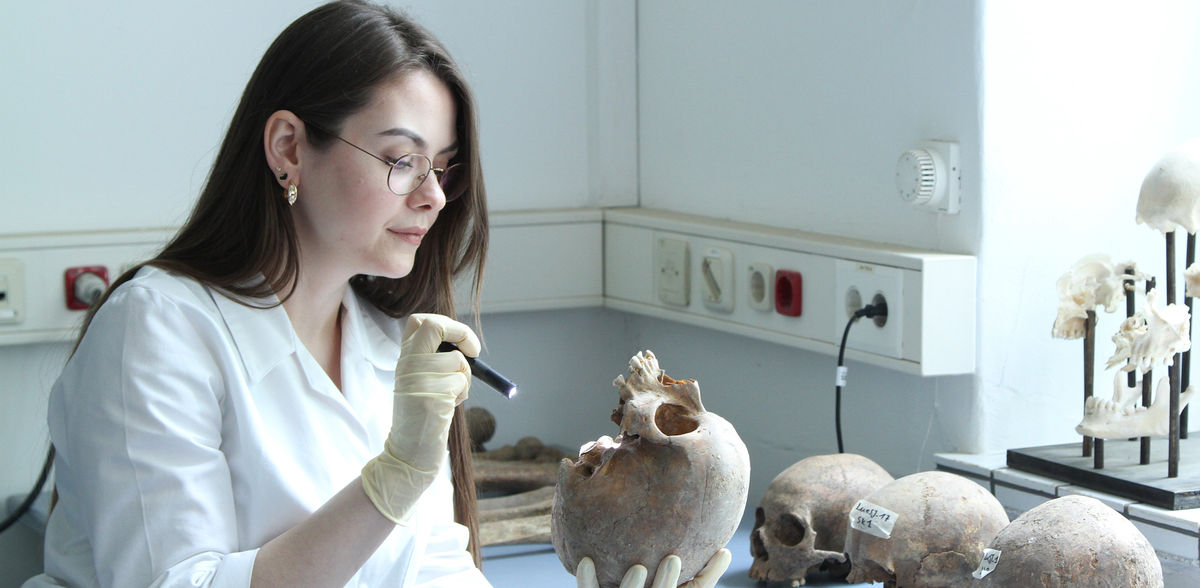New insights into the evolution of the plague pathogen
A research team from Kiel University and MPI-EB identifies genetic factors that were acquired by the pathogen Yersinia pestis during its recent evolution
Advertisement
The origins of the plague go back to the Neolithic Age, the oldest findings of the causative pathogen Yersinia pestis come from human bones around 5000 years old. In the history of the plague, the late antique Justinianic plague from the sixth century and the so-called Black Death of the late Middle Ages stand out. They were demonstrably caused by Y. pestis and, according to estimates, wiped out up to half the population in parts of Europe. While smaller, regionally limited outbreaks occurred repeatedly over the centuries on different continents, a third plague pandemic occurred from the mid-19th to the beginning of the 20th century. At first, it mainly affected Asia, with a focus on India, and subsequently spread globally. With around 15 million confirmed deaths, it is one of the deadliest pandemics in human history. The plague continues to occur regionally in the present day and is almost always fatal if not treated quickly with antibiotics.
Over thousands of years, Y. pestis has evolved into numerous strains, via both acquisition and loss of genes. Researchers worldwide are studying the evolution of Y. pestis to find out more about the causes of historical pandemics and the dangers that the plague continues to pose. In particular, they are investigating the genetic characteristics of the pathogen, which are responsible for transmission, geographical distribution and disease severity, amongst others. In a new study, a research team from Kiel University and the Max Planck Institute for Evolutionary Biology in Plön (MPI-EB) has examined ancient and modern Y. pestis genomes ranging from the Neolithic to the modern pandemic. The researchers led by Dr Daniel Unterweger, research group leader at the MPI-EB and Kiel University, and Professors Almut Nebel and Ben Krause-Kyora from the Institute of Clinical Molecular Biology (IKMB) at Kiel University found out that Y. pestis must have taken up a new genetic element, known as the YpfΦ prophage, between the Middle Ages and the modern pandemic, which is related to the virulence of the pathogen, i.e., its disease-causing effect. The prophage produces a protein that strongly resembles certain toxins from other pathogens, for example, the cholera pathogen. The researchers, who contribute to the Kiel Evolution Center (KEC) at Kiel University, among others, recently published their results together with colleagues from the University of Southern Denmark in Odense (SDU) in the journal Proceedings of the Royal Society B: Biological Sciences.

Among others, skeletons found during an excavation at a cemetery in Sejet, Denmark, provided genetic samples for new plague study from Kiel University.
© Unit of Anthropology, ADBOU, SDU
New genetic elements increased the virulence of the pathogen
The Kiel research team obtained the genetic samples thanks to a collaboration with the Department of Forensic Medicine at SDU, which manages skeletal material from various Danish museums. In this specific case, the scientists examined the skeletal remains of 42 persons buried in two Danish parish cemeteries between the 11th and 16th centuries. The genetic information contained in the samples was sequenced and the Y. pestis genes contained therein were compared with other published genomes dating to the Neolithic, medieval and modern periods.
"Previous research has shown that early in its evolution the pathogen lacked the genetic make-up required for an effective transmission via the flea, which is typical for today’s bubonic plague. In the course of its evolution, Y. pestis acquired a remarkable level of virulence, which contributed to the later outbreaks of some of the deadliest pandemics in human history" says Dr Joanna Bonczarowska, first author of the paper who conducted this research as part of her PhD at the IKMB with support of the International Max-Planck-Research School for Evolutionary Biology (IMPRS).
"In our study, we show that all known Y. pestis strains before the 19th century lacked a certain genetic element, the YpfΦ prophage", says Bonczarowska, who now works as a postdoc in the IKMB where she is funded by the Cluster of Excellence "Precision Medicine in Chronic Inflammation" (PMI). The prophage was likely taken up from the environment through lateral gene transfer. This genetic information influences the virulence of the pathogen, i.e., the severity of the disease resulting from an infection. Y. pestis strains that have the prophage, were shown to require a significantly lower lethal dose compared to those without YpfΦ. This uptake of new genetic elements could thus provide an advantage for Y. pestis during the modern plague pandemic.
How has the increased virulence since the Middle Ages come about?
The mechanisms by which the prophage contributes to the increased virulence of the modern plague pathogen have not yet been researched in detail. Previous studies suggest that such new genetic information can help the pathogen to infect body tissues far away from the original site of infection. In their search for such a mechanism, the Kiel researchers examined all proteins encoded by the new DNA in question. They discovered that one of these proteins is very similar to a toxin known from other pathogens.
"This protein is similar in structure to zonula occludens toxin (ZOT), which facilitates the exchange of harmful substances between infected cells and has a damaging effect on the mucosa and epithelia. This connection was first discovered in the cholera pathogen, where it causes the typical gastroenteritis symptoms", explains Bonczarowska. The Kiel researchers, therefore, want to investigate this ZOT-like protein in Y. pestis more closely in the future, as it offers a plausible explanation for the increased virulence of the plague pathogen in the present and recent past.
Further research into the evolution of the plague and other pathogens
Such a rapid evolution of Y. pestis adds to the pandemic threat it continues to pose. "Acquisition of new genetic elements may bring new symptoms of infection. These misleading signs of illness can make it difficult to diagnose plague in time and thus delay rapid treatment, which is essential for survival", stresses Unterweger. "In addition, some strains of the plague pathogen are already showing resistance to various antibiotics, which further contributes to the great potential danger of this disease", Unterweger continues.
An important aspect of the work is also the newly discovered parallels to other bacterial species, as genetic elements highly similar to YpfΦ, were also found in other bacteria. These findings provide clues to their future evolution towards increased virulence.
Overall, the research results underline that there is a great deal of knowledge to be gained for modern science and medical application in the study of historical disease evolution using aDNA, which goes back hundreds or even thousands of years. "Understanding how the pathogen was able to increase its harmfulness in the past, sometimes by leap evolution, will help us detect new forms of the disease and prevent new pandemics in the future", summarises Krause-Kyora.
Original publication
Joanna H. Bonczarowska, Julian Susat, Ben Krause-Kyora, Dorthe Dangvard Pedersen, Jesper Boldsen, Lars Agersnap Larsen, Lone Seeberg, Almut Nebel, Daniel Unterweger: "Ancient Y. pestis genomes lack the virulence-associated YpfΦ prophage present in Modern pandemic strains."; Proceedings of the Royal Society B: Biological Sciences 2023.

























































